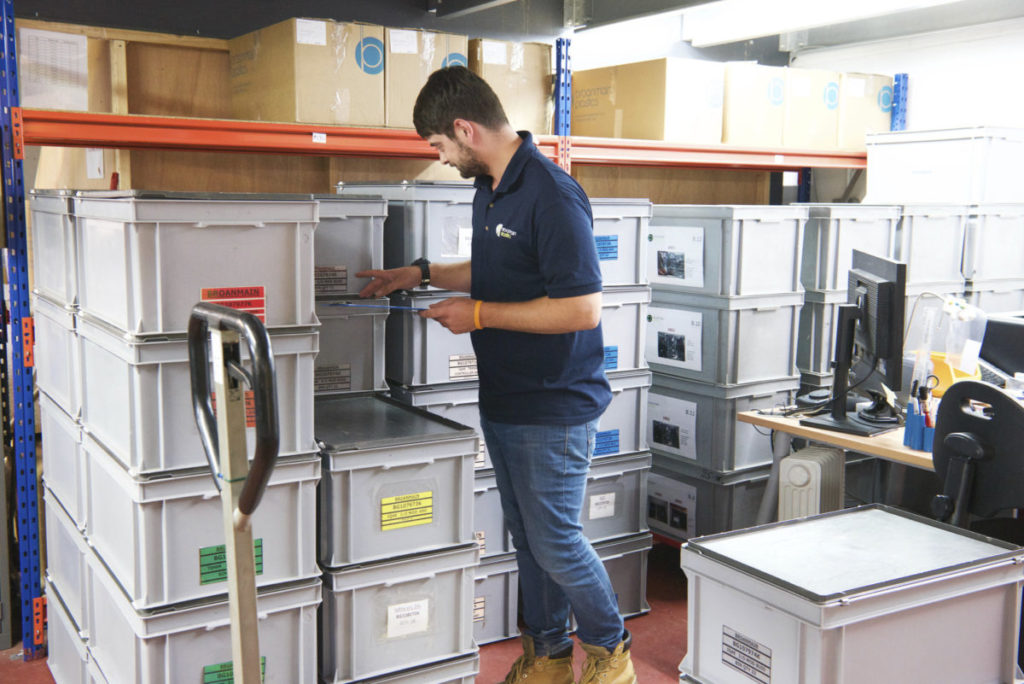Making Kanban work – Broanmain Plastics share their vision
Estimated reading time 6 minutes

Many who are aware of Kanban as a discipline in stock and supply chain management are less aware of how it could help their own business and their customers. MD of precision engineering company Broanmain Plastics Jo Davis assesses her company’s own experience of the system, where it works best – and situations where the benefits are harder to gauge.
As a specialist business offering an array of plastics moulding technologies to a diverse manufacturing customer base, Broanmain, which has been in existence for more than 60 years, first applied a Kanban system to stock management over 15 years ago. This was initially at the specific request of one customer, Siemens, to meet its own requirements. Since then, Broanmain has offered it wherever the benefits are clear, to the point where over half of its business is structured around Kanban.

The first system was first introduced by Toyota in 1950s Japan. What has been learned over time is the system can be a great option, benefiting both suppliers and for customers. However, it won’t necessarily work for all types of end product or customer, and may make commercial sense for only a given number of components.
What does it involve?
Broanmain has probably seen as many versions of Kanban as we have customers who use it. One common element is our role in holding stock, rather than the customers holding it themselves. For specific parts, we jointly work out an optimum batch size. From then on, we stick with that number. When the stock falls below an agreed threshold, we produce a new batch. In the first Kanban systems, a new ticket was generated when the prearranged stock level was reached. Today, it is more likely to be an ‘e-ticket’ flagged up on our Manufacturing Resource Planning (MRP) system.
In terms of logistics, companies with a larger contract would probably require a weekly delivery in any case. For smaller contracts, we tend to limit deliveries to one a month. We have to ensure we do not lose out financially by delivering too often. Only five per cent of our customers on Kanban incur charges for their deliveries.
What are the benefits?
Perhaps the key benefit for customers is the reduction in lead-times. For one-off orders, waiting times may be as long as four or six weeks. With Kanban, this time lag can effectively be eliminated, even with only monthly deliveries, where demand for regular stock items can be anticipated. At the same time, customers can dramatically reduce the amount of stock they hold.
Kanban avoids the need to estimate order sizes, once a fixed production batch quantity is agreed. It also reduces paperwork and administration, since neither invoicing nor formal ordering processes are required.
For suppliers, advantages include increased flexibility in production planning. Where it makes sense to do so, Kanban products can be produced in smaller runs than usual in the knowledge that they will contribute to a future delivery. For the same reason, nighttime ‘lights-out’ production can be set to automatically manufacture more than the standard run-length of a Kanban item.
Additionally, peaks and troughs in sales are smoothed out, with the certainty that, under Kanban, a given value of product will be supplied every month, making forecasting significantly easier.
Kanban is perhaps most beneficial for all involved, when it is integrated with a strategy of continual improvement. This relies on all parties, as well as the different departments within each business, seeking to resolve challenges together and communicating changes (and proposed changes) within their own planning and processes.
Is it relevant to all types of product?
Even the largest companies supplied on a Kanban basis, such as Siemens’ railway signalling business, use it only for their biggest-moving items – in its case, the ‘top 10’. These are the components which are most frequently used, and for which demand is most predictable. Importantly, high levels of predictability do not always equate to what might objectively be called ‘high volumes’. We have customers with, say, six items supplied on a Kanban basis because they want to avoid standard four-to-six-week lead-times. Yet, the actual volumes of those six items may not be especially high compared with other customers’ products.
When Broanmain first supplied on a Kanban system, we predicted that our own stock holding would go through the roof. In fact, as our production planning has become more efficient, that has not really been the case. Nonetheless, undelivered stock can build up, and Kanban works on the premise that the product in question will not be discontinued, potentially leaving the producer with a quantity of unordered, unsold components. If you have real doubts about the longevity of a given product, range – or company – spot orders may be a safer option.
Does it suit every customer?
Many of our customers requesting Kanban for smaller volumes of product are themselves small-to-medium-sized enterprises (SMEs), so Kanban is by no means the preserve of larger businesses.
The starting point for some customers may be suspicion of Kanban as a system, especially where individuals have little or no personal experience of it. At first, they may be nervous about not having the standard three-month volume of components in stock. In the UK, in particular, you may encounter the point of view among buyers that says: ‘I’m good at my job, and I don’t need to be told how to do it.’ In Germany, for example, there is often more understanding and acceptance of ideas about lean manufacturing.
At the same time, certain customers have initially declined our offer to put a given number of their regular products on Kanban. But when they did eventually try it, they loved the system. So, if you have a strong hunch that Kanban will work well for a particular company, it may be worth persisting in trying to persuade them.
There is no reason why a system that works, on an ad hoc basis, for our precision plastics moulding business, could not work for companies of a similar size in comparable supply chains – for at least some of their customers, and for some of those customers’ products.


